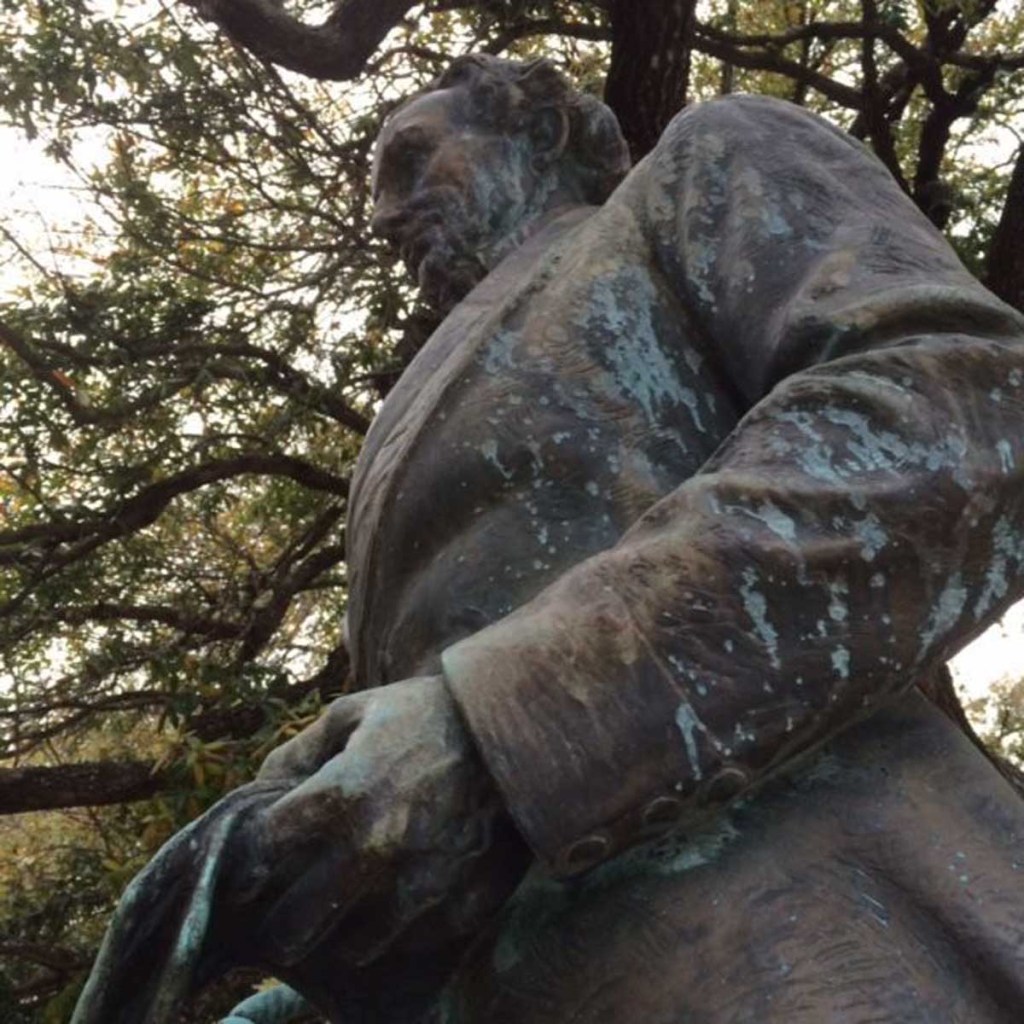UT sends statue of Confederate president to a museum
Published 4:00 pm Friday, August 14, 2015

- The statue of Confederate President Jefferson Davis at the University of Texas' main campus in Austin, under scrutiny since last spring, will be moved to a less conspicuous spot inside a museum on campus.
AUSTIN – A statue of Jefferson Davis is leaving the south mall of the University of Texas campus in Austin, but likenesses of other Confederate leaders, including Gen. Robert E. Lee, will remain.
“I’m very ecstatic,” said Xavier Rotnofsky, who began lobbying in March to remove the Davis statue as part of a successful campaign for UT student government president. “It’s amazing that what started as a humorous campaign ended with change today.”
The decision to move the statue of the Confederacy’s president to the university’s Dolph Briscoe Center for American History came on Thursday, at the advice of a task force commissioned by UT President Greg Fenves.
“As a public university, it is vital that we preserve and understand our history and help our students and the public learn from it in meaningful ways,” Fenves said in a statement. “Jefferson Davis had few ties to Texas but played a unique role in the history of the American South that is best explained and understood through an educational exhibit. The Briscoe Center has the expertise to do that.”
Task force members said events elsewhere – chiefly the fatal shooting in June of nine African-American worshippers at a South Carolina church by a white-supremacist gunman and the ensuing national discussion of Confederate iconography – built momentum for change in Austin.
“We are here today because of the tragic events in Charleston, S.C.,” said Gregory J. Vincent, the university’s vice president for diversity and community engagement, at a media conference earlier this week announcing the task force’s report.
Although Fenves might have decided to leave in place the statue of Davis, task-force member Rohit Mandalapu said doing nothing was not an option.
“This was the nth iteration of the discussion” over the statue, which dates back generations, said Mandalapu, who campaigned successfully for the UT student government vice presidency on moving Davis.
“I’m pretty happy that goal was reached,” he said.
Statues of Texas Gov. James Stephen Hogg, Confederate Postmaster John H. Reagan and Confederate Gens. Albert Sidney Johnston and Robert E. Lee will remain.
Hogg, Johnston and Reagan had deep ties to Texas, and Lee’s complicated legacy in the state and nation should not be reduced to his role in the Civil War, Fenves’ statement said.
To maintain symmetry on the mall, a statue of U.S. President Woodrow Wilson, opposite that of Davis, will move to an undetermined site.
The university may place a plaque on the mall to give historical context for the remaining statues and for an inscription west of the Littlefield Fountain that pays tribute to the Confederacy and Southern patriotism.
The statuary was placed as part of a larger, unified memorial envisioned by UT benefactor George W. Littlefield that was never finished.
Italian sculptor Pompeo Coppini – who handled commissions throughout Texas during the first half of the 20th century, according to the Texas State Historical Association – was responsible for the work.
Plans call for a Briscoe Center renovation that includes dedicated exhibit space for the role of symbolism, statuary and public memory in American history, incorporating Davis’ statue, within the next 18 months.
John Austin covers the Texas Statehouse for CNHI’s newspapers and websites. Contact him at jaustin@cnhi.com





